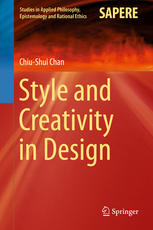

Most ebook files are in PDF format, so you can easily read them using various software such as Foxit Reader or directly on the Google Chrome browser.
Some ebook files are released by publishers in other formats such as .awz, .mobi, .epub, .fb2, etc. You may need to install specific software to read these formats on mobile/PC, such as Calibre.
Please read the tutorial at this link: https://ebookbell.com/faq
We offer FREE conversion to the popular formats you request; however, this may take some time. Therefore, right after payment, please email us, and we will try to provide the service as quickly as possible.
For some exceptional file formats or broken links (if any), please refrain from opening any disputes. Instead, email us first, and we will try to assist within a maximum of 6 hours.
EbookBell Team

4.8
24 reviewsThis book looks at causative reasons behind creative acts and stylistic expressions. It explores how creativity is initiated by design cognition and explains relationships between style and creativity. The book establishes a new cognitive theory of style and creativity in design and provides designers with insights into their own cognitive processes and styles of thinking, supporting a better understanding of the qualities present in their own design.
An explanation of the nature of design cognition begins this work, with a look at how design knowledge is formulated, developed, structured and utilized, and how this utilization triggers style and creativity. The author goes on to review historical studies of style, considering a series of psychological experiments relating to the operational definition, degree, measurement, and creation of style. The work conceptually summarizes the recognition of individual style in products, as well as the creation of such styles as a process before reviewing studies on creativity from various disciplines, presenting case studies and reviewing works by master architects.
Readers will discover how creativity is initiated by design cognition. A summary of the correlations between creativity and style, expressed as a conceptual formula describing the cognitive phenomenon of style and creativity concludes the work. The ideas presented here are applicable to all design fields, allowing designers to comprehend and improve their design processes to produce creative, stylistically unique products.